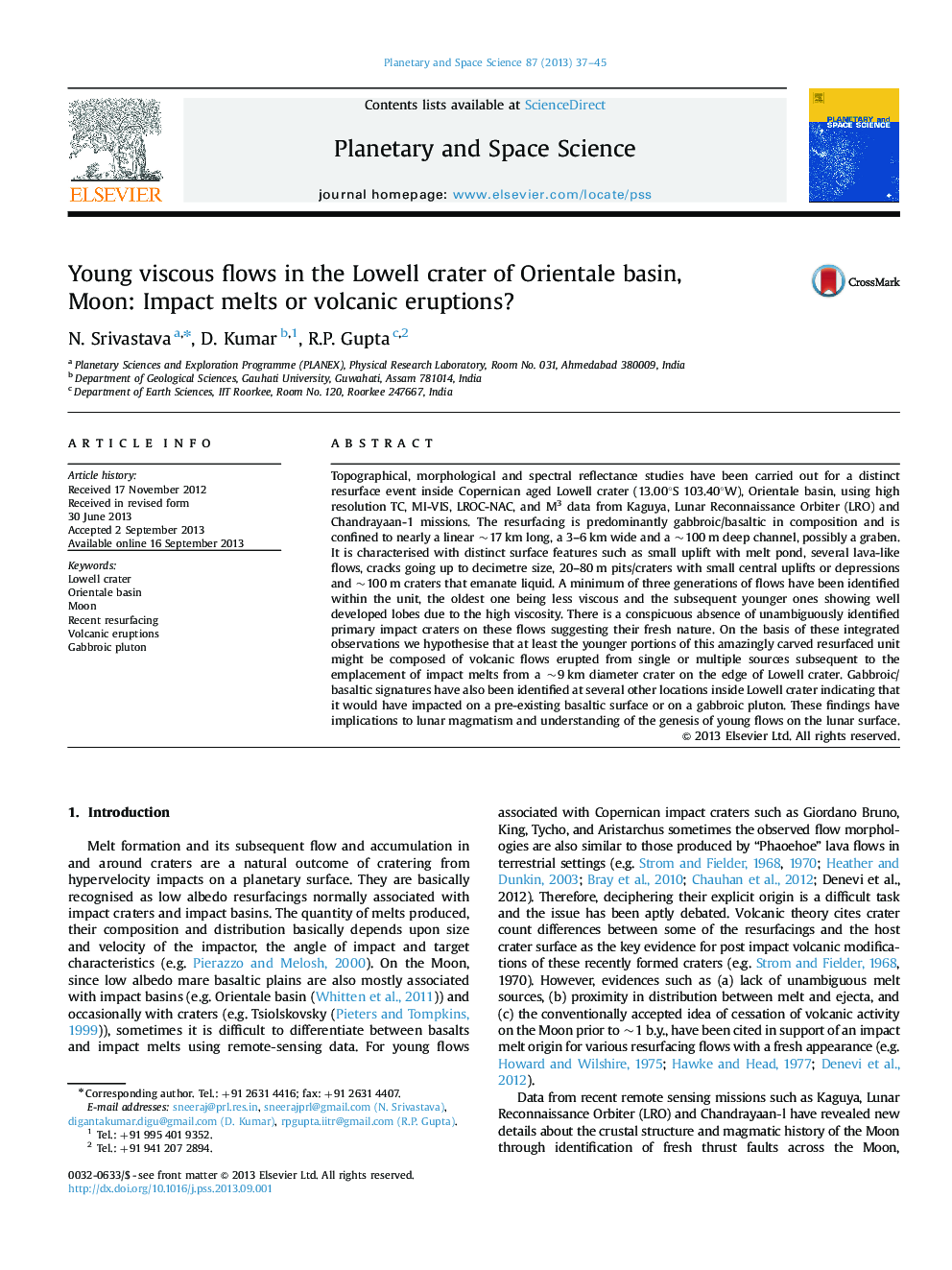| Article ID | Journal | Published Year | Pages | File Type |
|---|---|---|---|---|
| 1781194 | Planetary and Space Science | 2013 | 9 Pages |
Abstract
Topographical, morphological and spectral reflectance studies have been carried out for a distinct resurface event inside Copernican aged Lowell crater (13.00°S 103.40°W), Orientale basin, using high resolution TC, MI-VIS, LROC-NAC, and M3 data from Kaguya, Lunar Reconnaissance Orbiter (LRO) and Chandrayaan-1 missions. The resurfacing is predominantly gabbroic/basaltic in composition and is confined to nearly a linear ~17 km long, a 3-6 km wide and a ~100 m deep channel, possibly a graben. It is characterised with distinct surface features such as small uplift with melt pond, several lava-like flows, cracks going up to decimetre size, 20-80 m pits/craters with small central uplifts or depressions and ~100 m craters that emanate liquid. A minimum of three generations of flows have been identified within the unit, the oldest one being less viscous and the subsequent younger ones showing well developed lobes due to the high viscosity. There is a conspicuous absence of unambiguously identified primary impact craters on these flows suggesting their fresh nature. On the basis of these integrated observations we hypothesise that at least the younger portions of this amazingly carved resurfaced unit might be composed of volcanic flows erupted from single or multiple sources subsequent to the emplacement of impact melts from a ~9 km diameter crater on the edge of Lowell crater. Gabbroic/basaltic signatures have also been identified at several other locations inside Lowell crater indicating that it would have impacted on a pre-existing basaltic surface or on a gabbroic pluton. These findings have implications to lunar magmatism and understanding of the genesis of young flows on the lunar surface.
Keywords
Related Topics
Physical Sciences and Engineering
Earth and Planetary Sciences
Geophysics
Authors
N. Srivastava, D. Kumar, R.P. Gupta,
